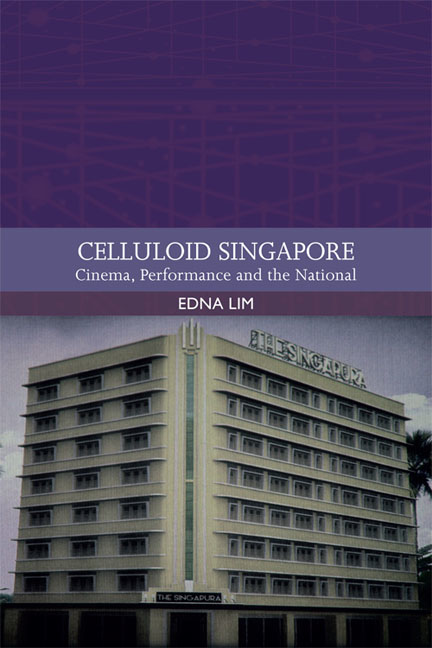Book contents
- Frontmatter
- Contents
- List of Figures
- Acknowledgements
- Traditions in World Cinema
- 1 Introduction
- 2 Merdeka!: Merger, Separation and a Transnational Golden Age
- 3 Influence, Hybridity and How the Past is a Foreign Country
- 4 Nation-building, a Nun and a Bionic Boy
- 5 Not so Foreign: the Case of Saint Jack
- 6 One People, One Nation, One Singapore
- 7 Revival Cinema: ‘Other’ Singaporeans in (An)other Singapore
- 8 Singapore Cinema in Singapore
- Works Cited
- Index
3 - Influence, Hybridity and How the Past is a Foreign Country
Published online by Cambridge University Press: 11 November 2020
- Frontmatter
- Contents
- List of Figures
- Acknowledgements
- Traditions in World Cinema
- 1 Introduction
- 2 Merdeka!: Merger, Separation and a Transnational Golden Age
- 3 Influence, Hybridity and How the Past is a Foreign Country
- 4 Nation-building, a Nun and a Bionic Boy
- 5 Not so Foreign: the Case of Saint Jack
- 6 One People, One Nation, One Singapore
- 7 Revival Cinema: ‘Other’ Singaporeans in (An)other Singapore
- 8 Singapore Cinema in Singapore
- Works Cited
- Index
Summary
The hybridity of golden age Malay films points to influences that were more wide-ranging than the nationalities of the talents that made them. As writers like Millet have pointed out, these are ‘less direct and internalised, but nonetheless undeniable and observable’. They include Indian and Hollywood cinemas, Arabic films, particularly Egyptian ones, as well as Japanese cinema, which many of the filmmakers were exposed to during the Occupation. For instance, Timothy White details the influence of Yasugiro Ozu in the low camera height in Bujang Lapok, (P. Ramlee, 1957), Kenji Mizuguchi in the crane shots in Ibu Mertua Ku (P. Ramlee, 1962) and the references to Akira Kurosawa's Rashomon in the cinematography of Sergeant Hassan (Lamberto V. Avellana, 1958). William van der Heide also traces the commonalities between the work of these Japanese filmmakers and Hang Jebat. However, both writers note that these types of shots are not sustained in the films. The influence is stylistic in nature, reflecting the formal hybridity of these Malay films. These films were not as culturally specific as the term ‘golden age of Malay cinema’ might suggest. As Millet puts it, ‘while Malay on the face of it, Singapore cinema was in fact characterized by a great internal cultural heterogeneity.’ This is not surprising, since this period was also the golden age of film production in Singapore and the industry was a transnational one.
Writing on the Malay films of this period often notes the influence of bangsawan and wayang kulit (shadow puppetry). However, although Millet describes them as ‘two pre-or proto-cinematic forms directly originating from the Malay world’, they were, in fact, originally hybridised forms of performance. Bangsawan is a musical, theatrical form often characterised as Malay opera. It started in Penang in the late 1800s and became popular in Malaya and Singapore in the 1920s and ‘30s. It is an offshoot or adaptation of Parsi Theatre (wayang parsi in Malay), a popular form of entertainment for the Indians in the British army. From Parsi Theatre, bangsawan derived its proscenium staging, the practice of entry fees8 as well as the use of music and dance performances between acts (known as extra turns).
- Type
- Chapter
- Information
- Celluloid SingaporeCinema, Performance and the National, pp. 43 - 68Publisher: Edinburgh University PressPrint publication year: 2018



